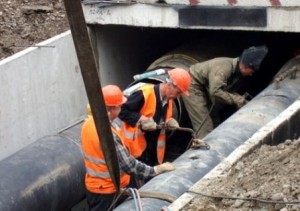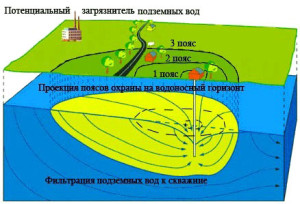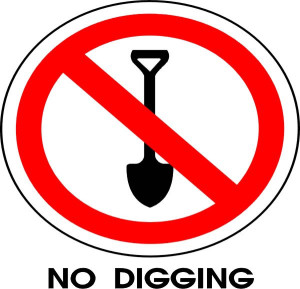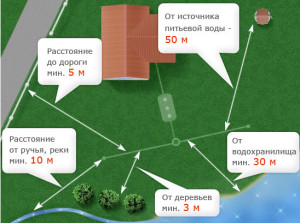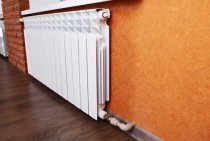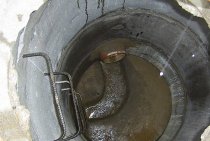Regulations and requirements for protected areas
Security zone of sewerage networks
General regulatory requirements are presented in the following documents:
SNiP 40-03-99 - a newer version of SNiP 2.04.03-85 - basic design requirements
SNiP 2.07.01-89* - all about the planning and development of settlements
SNiP 2.05.06-85* - norms related to main pipelines
SNiP 3.05.04-85* - organizational issues and acceptance of work
The norms and sizes of buffer zones for a particular region are adjusted and adopted by local city or rural administrative authorities.
The security zone of sewerage networks under normal conditions is established depending on the diameter of the pipes:
up to 600 mm - at least 5 meters from the pipeline walls
1000 mm or more - from 10 to 25 meters in each direction, depending on the purpose of the sewer network and the composition of the soil in which the pipeline is laid
When determining the size of security zones, special attention is paid to such parameters as:
seismological hazard
actual humidity readings
With unfavorable data, the size of the security zones is increased.
SNiP 2.07.01-89* clearly regulates the horizontal distance from underground sewer networks to:
foundation of structures - 5 m for pressure and 3 m for gravity sewer network
axes of the extreme rail of the railway gauge - 4 m
curb of the carriageway - 2 m for pressure and 1.5 m for gravity sewer
street lighting poles and contact network - 1 m
poles of high-voltage networks - 3 m
Required distance between water and sewer networks
Water supply networks should be located above the sewer. This is especially true at the intersection of communications. If this condition is not possible to fulfill, then the sewer pipes are placed in a casing, the length of which depends on the type of soil. In loams and clays, it should be 10 meters, and in sands - 20 meters. Crossing is allowed only at right angles.
Important! If it is necessary to repair a sewer or water supply at the place of their intersection, an excavator can only be used to a depth that is one meter higher than the level of the upper wall of the pipe. Further excavation is carried out manually without percussion instruments.
The distance between domestic sewage and adjacent underground pipelines laid in parallel within the city can be at least:
0.5 m - to underground cables
1 m - to heating networks
10 meters - with a diameter of 1000 mm
From the river banks - 250 m.
Important! All these distances are recommended to be increased by 10% due to the fact that the protected water zones on the diagrams do not always correspond to the actual sizes. Distance from the septic tank to the well and other facilities
Distance from the septic tank to the well and other facilities
Among experts, there are different opinions about what constitutes a buffer zone for sewers. In practice, disagreements arise between local authorities and operating organizations. In this case, the correct arguments will be given by the specialists of the water utility enterprises. Therefore, preliminary design, coordination and exact implementation of all requirements will prevent possible conflicts and ensure stable, trouble-free operation of the sewer for many years.
Sanitary standards for water pipes
According to sanitary norms and rules, the sanitary zone is the distance that must be observed from any pipe in which water is transported. Moreover, regardless of its personal or state affiliation, occupancy from underground or aboveground sources.
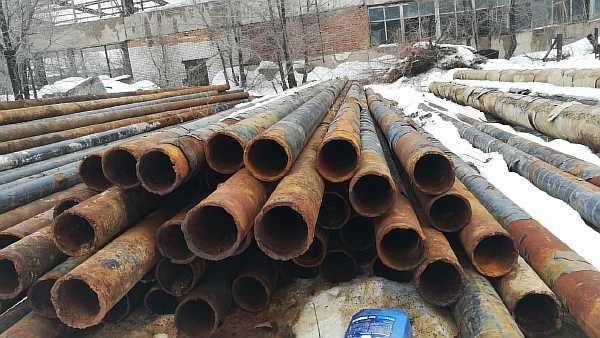
Since SanPiN, which defines the protective territory, was created on the basis of Federal Law No. 52, non-compliance with the requirements threatens with serious troubles for violators of existing rules. In this regard, it is worth noting the following:
- absent or created in violation of existing norms, the protected area and the sanitary zone of the water supply system are punishable by a fine, often quite significant for the budget;
- the operation of communications, in accordance with existing regulations, is regulated by the Code of Administrative Offenses (CAO);
- violation of the sanitary zones of reservoirs and other sources of water supply can be up to 40 thousand rubles for legal entities, and up to 2 thousand rubles for individuals. and more, depending on the severity of the offense committed;
- the water supply zone cannot be used for any type of construction or reconstruction, unless we are talking about structures that are of direct importance for its functioning or protective measures of a sanitary and epidemiological orientation;
- the water supply zone assumes the absence in the close neighborhood of sewage, sewage, agricultural land in which pesticides are used;
- Strict restrictions are imposed on the proximity to garbage dumps, the burial of any kind of waste, and even on logging, unless it is sanitary.
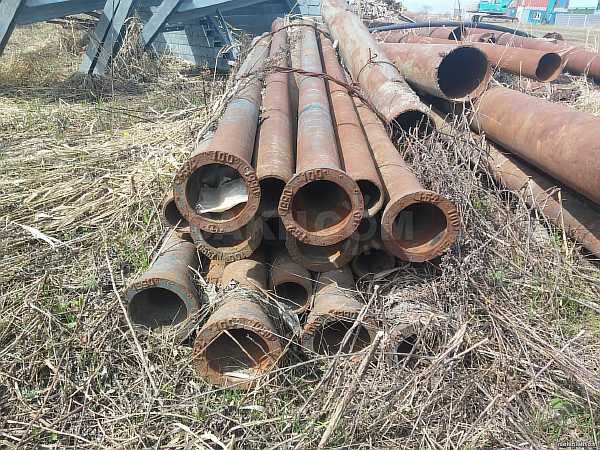
The Russian government has adopted a number of resolutions and documents that show that the concept of "security zone" refers not only to water intake. Protective measures are subject to the entire route of water transportation through the pipeline, starting from the source and further along the entire length.
However, from a legal point of view, the Sanitary Protection Zone (or ZSO), created during the implementation of water supply, depends on several components.
In particular, the source of water - underground or aboveground, the level of natural protection available in a particular case. As well as the epidemiological and environmental situation and hydrogeological conditions at the site or in a particular area.
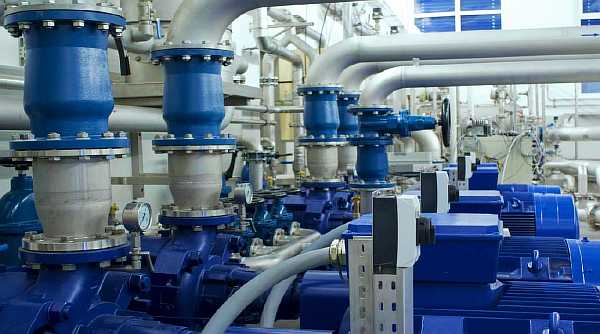
Sanitary protection zone of water supply and sewerage
If the water supply runs through undeveloped areas, then the width of the protective strip (sanitary protection zone) depends on the quality of the soil and the diameter of the pipeline:
- in dry soils - 10 m with a diameter of up to 1000 mm and 20 m with large pipe sizes;
- in wet soils - at least 50 m.
- The water pipeline, the buffer zone of which runs in the development sectors, can carry additional environmental and production burden. The protective zone of the water supply in the built-up areas can be reduced in agreement with the SES authorities. A mandatory minimum is established by law, which cannot be reduced under any circumstances:
- from the foundation of buildings and structures - at least 5 m;
- from the foundations of fences, flyovers, supports - at least 3 m;
- from the side stone of the street - at least 2 m;
- from supports of overhead power lines - from 1 to 3 m, depending on the power of the network.
Thus, the water supply and sewerage protection zones vary in width depending on external factors.
Rules for the protection of main pipelines
Arrangement of main pipelines must comply with the provisions of the Decree of the Gosgortekhnadzor of Russia No. 9 dated April 24, 1992 "Rules for the protection of main pipelines". This resolution prescribes security zones for various types of main pipelines. For objects of various purposes, their own regime of the buffer zone is determined, which contains restrictions regarding the land plot adjacent to the place of use.
Objects with open and underground sources of water supply have sanitary zones, for which the boundaries are set taking into account the soils of underground areas. The water supply of various facilities should be planned and developed simultaneously with sewerage projects.
Sanitary protection zone (Design of ZSO zones)
Watch this video on YouTube
According to the rules in the security zone it is prohibited:
- unauthorized planting of trees;
- digging holes and trenches;
- storage and dumping of garbage, firewood, other materials;
- performance of work on driving piles;
- blasting;
- land works for various purposes related to the movement of soils;
- to equip a permanent or temporary pavement of reinforced concrete slabs;
- to carry out works blocking entrances to water supply and sewerage pipelines.
Sizes of protected areas
According to SNiP, the protective zoning of water supply facilities is formed from 3 belts:
- Strict regime.
- Restrictive.
- Observant.
Sanitary Belt No. 1 is responsible for protecting water intake sites and facilities for this purpose from any actions that could cause harm. Belt No. 2 protects water sources from microbiological contamination. Observation belt No. 3 controls the level of chemical pollution. According to hygiene standards, sanitary zoning for open and underground water sources has different sizes.
The strict open source belt is defined by adding 200 m of adjacent territory upstream and 100 m downstream. For underground sources, belt No. 1 is at least:
- 50-60 m around shallow wells;
- 25 m for deep wells.
Belts 2 and 3 of the sanitary protection zone are determined by specialists using a complex method using hydrodynamic calculations. They take into account the survival time of microbes for the restrictive belt. For observational zoning - the range of distribution of chemical compounds, while their composition in water is considered stable.
What causes violation of rules and requirements
Punishment for non-compliance with the rules of sanitary zoning of water supply networks is regulated by the Code of the Russian Federation "On Administrative Violations" dated December 30, 2001 No. 192-FZ. Pollution of water sources and territories of sanitary protection belts can lead to contamination of drinking water. And this, in turn, can cause the spread of epidemics and mass diseases of people. The penalties apply to:
- individuals (citizens);
- officials;
- legal entities (firms and companies).
Administrative responsibility for non-compliance with the rules and requirements for sanitary water supply zones is as follows - sanctions are imposed on the perpetrators in the form of a fine:
- to a private person - 500-1000 rubles;
- officials - 1000-2000 rubles;
- firms and companies - 10-20 thousand rubles.
What is a protected area
A security zone is one of the types of zones with special conditions for the operation or protection of certain territories, the size and content of which are regulated by the current legislation of the Russian Federation. The concept of a protected area includes:
- in fact, security (ensuring the integrity and absence of damage to both the structure itself and the potential harm that an object protected by a fence or legal norms can bring;
- the sanitary protection zone performs a dual function - sanitary, anti-epidemic and protective - protection and removal from structures that pose a potential threat of damage;
- water protection zones that prevent pollution of water bodies, from which it is likely that the population will be provided with water;
- zones of sanitary protection of sources of drinking water and liquids for household supplies;
- other protected areas - near airfields, floods, protected cultural and historical sites.
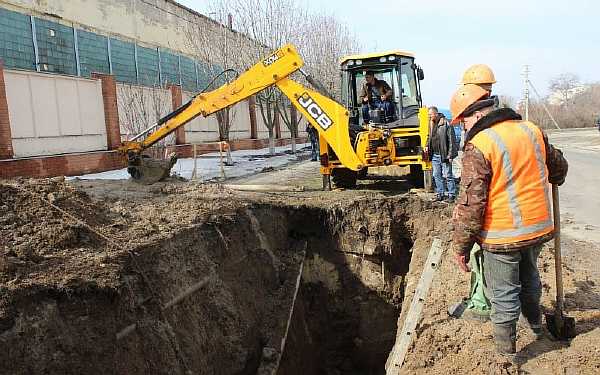
The purpose of the legislative restriction carried out at the federal level is to approve special operating conditions or exclude them from use other than for their intended purpose.The distance at which objects should be located from areas of cultural or historical heritage may be determined by a decree of the government of the region.
Fish protection and water protection territories and their delimitation are fixed at the level of federal legislation. How many meters in each direction is the security zone of gas and oil pipelines, oil products and ammonia pipelines, pipelines to fully meet the domestic needs of the population, determine the relevant SNiP, SanPiN and SP.
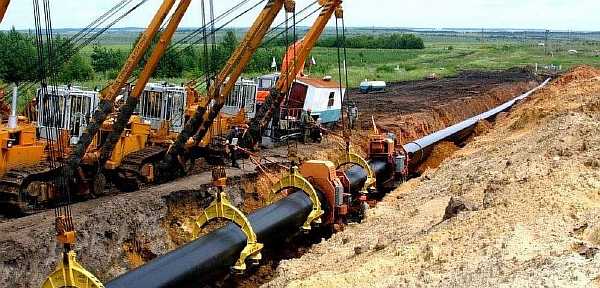
How to lay a sewer in relation to the water supply
The laying of sewer and water systems in a private house is regulated by the requirements of SNiP. Pipes of water supply and sewerage must be placed without fail in parallel.
The distance between engineering networks made of plastic pipes is 1.5 m. If a cast-iron water and sewer pipe with a diameter of more than 20 cm is laid, the distance between them is 3 m. If the diameter of cast iron pipes is less than 20 cm, the distance between them is 1, 5 m when laying networks nearby. The use of asbestos-cement and reinforced concrete pipes for water supply requires laying them at a distance of 5 m from the sewer.
Secrets of entering water supply and sewerage into the house
Responsibility for non-compliance with security rules
Provided for non-compliance with the rules of protective zoning of water bodies, responsibility with the imposition of an administrative penalty. Anyone who has committed a violation shall pay a fine in the amount of:
- private person - 1500-2000 rubles;
- representatives of firms and companies - 3000-4000 rubles;
- firms and companies - 30-40 thousand rubles.
The territory of the protective belt No. 1 is necessarily fenced and strictly guarded. Warning signs are installed around the perimeter of the fence.
Possible consequences of non-compliance with the required standards
As a result, earthworks in a certain area are carried out without realizing that it is located in a protected zone. In this case, it is possible to harm the environment, serious damage to sewer networks or facilities, leading to property damage, significant losses and material costs for restoration.
clean up garbage in a timely manner, and in winter snow and ice, ensuring unhindered access to sewer facilities
invite a representative of the organization that issued the permit to the procedure for handing over the object
These obligations apply to all contractors performing work in open areas and territories in protected areas.
The concept of a buffer zone
Any sewer system is a potential source of danger to drinking water or nearby areas. To prevent their pollution by sewage, security, or sanitary, sewerage zones are provided.
For pumping stations, treatment and other sewage facilities, there are their own regulatory indicators, depending on the size of the buildings, their purpose and location. Information about their boundaries can always be obtained from local governments and specialized organizations, as well as from design bureaus.
plant trees at a distance of less than 3 meters from the collectors
cut or fill soil
use percussion mechanisms and drilling rigs
block access to facilities
to carry out lifting and construction work without an appropriate permit
Failure of external sewer systems
Accidents in external sewer systems occur much more often than on water supply networks, power supply and communication lines. This is due to the fact that the protected zones of sewer networks do not have warning signs. Organizations operating engineering communications are required to notify the presence of electrical cables in the service area with appropriate stationary signs, but this does not apply to sewerage.
A thorough study of the area where it is planned to carry out certain works will help not to get into a difficult situation.A sign of the presence of sewerage networks on the territory is the wells located on it, on the covers of which there is a marking in the form of a large letter "K". It is necessary to order an engineering communications plan from specialized organizations (design institutes, local administrations, Vodokanal trusts) and carefully read it, analyze security zones, obtain appropriate permits, and consult with specialists.
It is forbidden to carry out work in the sewerage security zones without a special permit. After obtaining the appropriate permit, the contractor must:
adhere to strict observance of norms, requirements and rules
ensure the safety of sewer pipelines and structures, as well as their integrity
take all possible precautions, suspending work if any inconsistencies are found in the documents and permit certificates provided to him
average temperature
the main characteristics of the soil
flyovers, fences, supports - 3 and 1.5 m, respectively
outer edge of the cuvette - 1 m
In some cases, the distance is reduced or increased, having made the final calculations and having decided on the justifications.
Joint laying of underground pipelines
The norms of SNiP stipulate the distance between water and sewer pipelines and the requirements for their mutual arrangement.
1.5 - 5 m - to the water supply, depending on the material of manufacture and the diameter of the pipes
0.4 m - to rainwater
from 1 to 5 m - to the gas pipeline, depending on the pressure
With a longitudinal arrangement of water and sewer main networks, the following distances are maintained:
20 meters - with a diameter of more than 1000 mm
50 meters - when laying highways in wet soils
It is forbidden to place sewerage networks in sanitary zones of water mains.
Sewer collectors in water protection zones should lie at a distance:
From the lakes - 100 m from the water border.
From underground sources - 50 meters or more.
kanalizaciyainfo.ru
Conclusion
When installing any type of sewerage, the necessary technical conditions and requirements regarding security zones should be observed. There may be deviations from the accepted norms for the arrangement of sewer collectors, a change in the minimum distance from the outer walls to the walls of the pipeline. But such changes must be agreed with the relevant authorities and obtain their permission to work in the sewerage buffer zone.
It is necessary to take a responsible approach to the issue of safety and prevent possible accidents of sewer communications. After all, the life support of citizens of any modern settlement depends on them.

